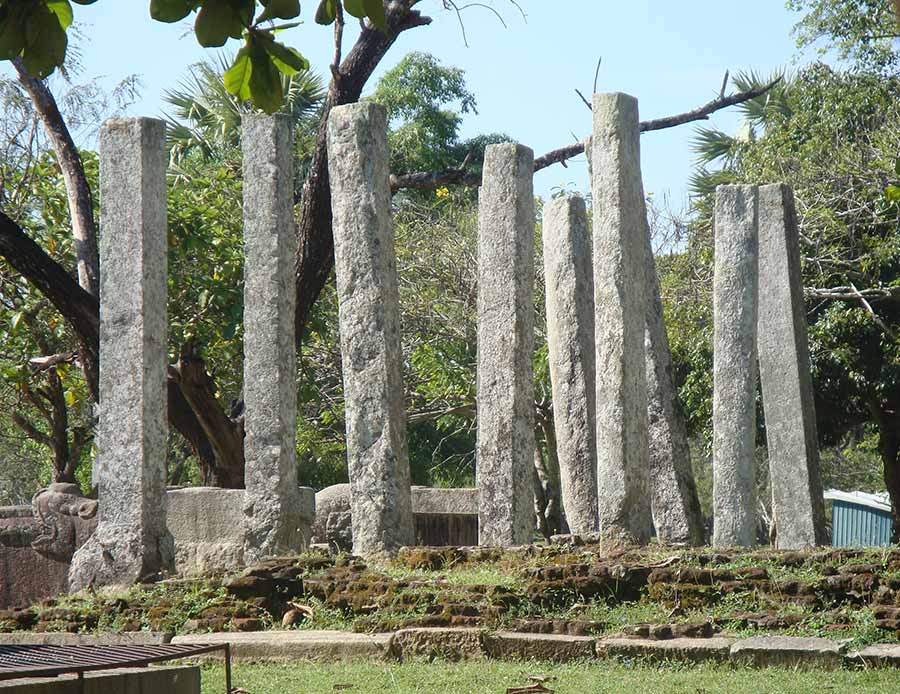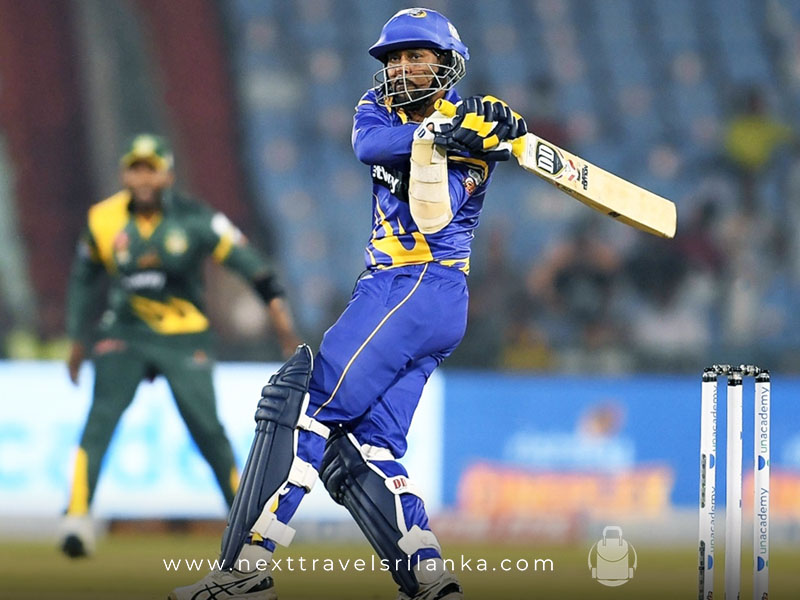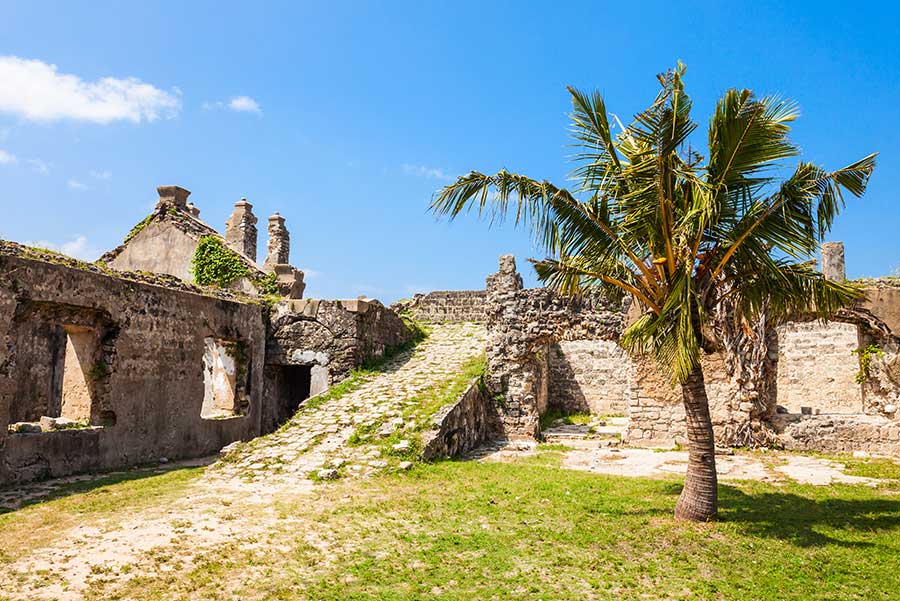
The significance of the splendid island of Sri Lanka lies in various factors. Among them, its long-recorded history is one of the main things that attract tourists to this country. In fact, the history of this island has an unbreakable connection with its heritage and culture. Hence, even the visitors are curious about the roots of the country and usually explore particular facts. However, when considering the past, the ancient kingdoms of Sri Lanka hold an important place. To be specific, the country was having royal authority over kingdoms in those days.
Hence, we thought of focusing this article on these ancient kingdoms of Sri Lanka, their features, and the creations that were implanted in those territories. Continue reading, to know all the interesting facts about these kingdom eras.
What are the Ancient Kingdoms of Sri Lanka?
According to the recorded history of Sri Lanka, there had been nine main ancient kingdoms. They are as follows, based on their period of existence.
- Anuradhapura Kingdom
- Polonnaruwa Kingdom
- Dambadeniya Kingdom
- Yapahuwa Kingdom
- Kurunegala Kingdom
- Gampola Kingdom
- Raigam Kingdom
- Kotte Kingdom
- Kandy Kingdom
Scroll down for details about these kingdoms!
Anuradhapura Kingdom
Anuradhapura kingdom is the very first and the most important among the ancient kingdoms of Sri Lanka. It was the first kingdom to rule the whole country, extending authority throughout the country.
King Parakramabahu founded this kingdom in 437 BC. The most important incident related to the Anuradhapura kingdom is the introduction of the religion, Buddhism. With the arrival of Buddhism to the country, it started influencing the culture, laws, and even methods of governance during the Anuradhapura era.
The faith in Buddhism contributed to revolutionary changes in both society and culture. When it comes to other significant facts about the Anuradhapura Kingdom, there is a whole lot of significance regarding the irrigation industry, agriculture, and monumental buildings.
Even the notable rulers of this kingdom such as King Dutugemunu, King Valagamba, King Datusena, etc. have done noteworthy service towards the kingdom that is still in the account. Their service was once regarding agricultural prosperity, once regarding building monuments, once regarding religion, and significantly about fighting with the invaders. So, the Anuradhapura kingdom is all about introducing the ruling system, irrigational techniques, sculpting, and several architectural skills.
The advancement of these facts is evident through the environment and the monuments of the city even at present. Further, the most significant addition of Anuradhapura kingdom to the betterment of the country is ensuring water supply in the dry zone. This helped the country grow mostly self-sufficient.
Owing to all these reasons, Anuradhapura kingdom is not just the first-ever kingdom in the country, but a kingdom that introduced and established a whirl of innovators for the betterment of the country.
If you visit the ancient city of Anuradhapura, you can still observe the grandeur of this wonderful kingdom!
Polonnaruwa Kingdom
Following the Anuradhapura kingdom, the next main kingdom that came up was the Polonnaruwa kingdom. If one says this is the second most important kingdom in Sri Lanka, there is nothing wrong with that statement as well.
However, this was the first kingdom to expand its authority across the country and even overseas territories. This expansion was started during the reign of Parakramabahu the Great. Further, the kingdom is rich with cultural heritage which is second only to the richness of the Anuradhapura kingdom.
At the same time, the history of the kingdom has a strong association with Buddhist monasteries and monuments. Most of the rulers contributed to developing the religious aspect of the kingdom. In fact, they uprooted the Buddhist buildings and monuments with the intention of stabilizing the religion within the country.
When it particularly comes to the contribution of the Polonnaruwa kingdom towards the betterment of the country, it is impeccable. This time was specifically the time to establish major architectural wonders on the territories of the island. Even the rulers developed the city to be an accommodation for Indian architects and technicians in order to let Indian architecture be the inspiration of every work.
Along with the architecture, the Polonnaruwa kingdom is well-known for the introduction of all-time best arts and sculpture as well. It is still evident through the monuments and historical sites such as Gal Viharaya, Thuparamaya Image House, and Lankathilaka Image House. Even today, both local and foreign crowds lead Polonnaruwa to witness this long-time preserved artistic value. So, don’t forget to visit the ancient city of Polonnaruwa to witness this heritage as you explore Sri Lanka!
Dambadeniya Kingdom
Dambadeniya is the third among the ancient kingdoms of Sri Lanka and is a medieval one. King Vijayabahu II founded this kingdom after the breakdown of the second kingdom, Polonnaruwa. During the same period, two other kingdoms, namely Yapahuwa and Kurunegala also ruled the country.
Among these three, Dambadeniya was more powerful and had quite a huge area under its authority. According to the ancient chronicles, this kingdom had two parts, the inner city, and the outer city. The inner city has protected several major monuments that are related to the Buddhism religion while the outer city acted as a thick barrier that protected the inner city. The boundary walls of the outer city were built in stone, clay, and timber to be firmer and stronger.
The major findings of the Dambadeniya kingdom were currency and literature. Dambadeniya kingdom was the period that gave birth to the aforementioned two aspects while making a huge impact in the city based on them. When it comes to currency, it was during the Dambadeniya kingdom that the manufacturing of copper coins started. People call these coins Dambadeniya coins, and the rulers started to mint these coins with their names as well.
Further, during the period of the Dambadeniya kingdom, Sinhalese literature was at its highest point. In fact, this period is well-known as the golden era of Sinhalese literature. It is simply because this was the period when various well-known characters such as kings and monks wrote many literary works that are still on account. These works are not just popular but literally very valuable as well.
Yapahuwa Kingdom
Yapahuwa is a kingdom that is parallelly in power with the Dambadeniya kingdom. The main responsibilities of the Yapahuwa kingdom were to govern the island and preserve the Sacred Tooth Relic of the Buddha. Hence, the kingdom was politically as well as culturally significant, and thus, the contribution towards the development of the country was quite high.
Owing to this very reason, Yapahuwa is one of the most unique and important sites of the country which houses historic interest in ancient battles and governance. In fact, there are several battles that took place at the time which resulted in incredible victories. Further, the Yapahuwa was a kingdom that prioritized archeology, art, culture, and tradition during its period. This fact is evident through the monumental remnants in the city as well. They are still lively owing to the rich archeology employed when they were built back then.
One such long-living masterwork is the ornamental stairway that leads up to Yapahuwa palace. This stairway is still in good and firm condition although it indeed is more than three decades old. Further, the locals compare this city to the world-famous Sigiriya rock fortress. That is because it holds a minuscule resemblance to the rock fortress. It also contains a single Chinese-looking lion sculpture which is not as huge as the one in the Sigiriya rock fortress. Yet, the sculpture attracts visitors to its uniqueness and appearance.
The kingdom also worked a lot on the improvement of Sinhalese literature as well. In fact, the ear opened up the space for emerging literary workers while giving recognition to their talent. At the same time, sculpture creation or craftsmanship was a thing during the Yapahuwa kingdom. You can still visit the Yapahuwa Rock Fortress to observe the remains of the kingdom.
Kurunegala Kingdom
This kingdom also known as the Panduwasnuwara kingdom relies on the ancient names of certain areas. However, Kurunegala is the third kingdom that was in power along with the Dambadeniya and Yapahuwa ancient kingdoms in Sri Lanka.
It all says that this kingdom started with a series of events that took place during the late 12th Century at Yapahuwa. After getting down the Temple of Tooth Relic of Lord Buddha, the symbol of authority to the premises, Kurunegala became the governing center for three other kings of Sri Lanka that were subsidized in authority along with the Kurunegala Kingdom.
However, this kingdom is more about Buddhism and literature than about battles and victories. The kings of the Kurunegala kingdom gave their patronage to Buddhism and literature while clearing the paths to the utmost development of particular fields. In fact, during this period a huge number of Viharas and Buddhist monuments came up. At the same time, this period is famous for establishing Pirivenas, Schools for monks, which resulted in producing more religious and purposeful monks in the country.
Translation of the Jathaka Katha was one of the most significant religious-related activities that happened during the Kurunegala kingdom. Later, several religious literary works were translated into several languages with the intention of spreading the message of religion around the world rather than being confined only to the island.
Apart from these religious and literature-related things, the kingdom is also well-known for its contribution to the irrigation industry as well. In fact, the Kurunegala kingdom is a period when a number of tanks were established. They contributed immensely in making the agricultural industry of the country prosperous.
However, according to historical facts, the kingdom ended up with a rebellion that took place against the last king on accusations of murdering the previous king.
Gampola Kingdom
Gampola kingdom came into authority after the breakdown of the Kurunegala kingdom. Yet, this is the fourth among the ancient kingdoms of Sri Lanka, to spread its power all over the country rather than being authorized for a limited area.
This kingdom was in effect, particularly during the period from the 14th to the 15th century. There is no exact reason for the transition of the kingdom from Dambadeniya to Gampola, but there is a belief that it was because of the defense.
Gampola kingdom is famous for installing inscriptions. They used it as a mode of recording the history and development of the architectural industry in the country. According to the records, there are a considerable number of inscriptions that belong to the Gampola period. It includes copper sheets and Sannasas as well. There are beliefs that the scholars recorded them. Their intention had been to let the future island know about the services of each king or ruler belonging to that particular period.
Apart from that, this kingdom is famous for its contribution towards the betterment of the architectural field in the country. The ancient chronicles, inscriptions, and records reveal these facts. One can rarely find living evidence for that aspect of the kingdom except for the remains of the palace buildings. But scholars assure that there was a history of architecture in the Gampola kingdom, yet not as much as the other kingdoms.
However, the kingdom thoroughly preserved, renovated, and maintained the archaeologically rich sites that were established during the times of other kingdoms. After quite a remarkable governing period, the Gampola kingdom reached its end in the early 19th century.
Raigama Kingdom
Raigama kingdom emerged after the decease of the Gampola kingdom, not as a kingdom to the whole country, but to one particular area of the country. It particularly spread its authority towards the Southwestern and Southern regions of the country. Kalutara, Galle, and Matara were the areas that belonged to the kingdom of Raigama.
This kingdom is famous for its significant deposits of clay-ironstone. They have been the materials for the historical buildings of that time as well. Not only the palace and fort but also the garden pond and many other acquainted buildings are also lined with clay-ironstone. Indeed, it was an architectural marvel that the Raigama kingdom introduced to the country.
Further, the kingdom has made a remarkable contribution towards the betterment of the arts and crafts of the country. In fact, the kingdom is well-known for the establishment of the pottery industry as well.
After quite a fruitful governing period Raigama kingdom ended with the first invasions of the Portuguese.
Kotte Kingdom
Kotte kingdom is the fifth kingdom to flourish on the whole island. This kingdom started its rule during the early 15th century. It ended with the last native sovereign unifying all of Ceylon under one rule.
However, the Kotte kingdom was able to unify the country which had been ruled by two kingdoms, namely Jaffna and Kandy. The rulers were successful in ruling the country under one main kingdom. Yet, the complete shatter took place with the foreign invasions. For this very reason, many consider the Kotte kingdom a successful and prosperous kingdom.
The kingdom is particularly well-known for aspects such as military, trade, and literature. When it particularly comes to the military of the Kotte kingdom, it was closely associated with both rise and demise. However, according to the records, the Kotte kingdom is responsible for introducing firearms to the military in Sri Lanka. It was first quite hard to adopt, but later with the help of Arabs who came back and forth to the country owing to the trade, it became a major military technique in Sri Lanka.
Kandy Kingdom
The Kandyan Kingdom is the last independent kingdom of ancient Sri Lanka. The Senasammata Vikramabahu created the Kingdom of Kandy. It came up as a semi-independent kingdom under the Kingdom of Kotte. However, the Kotte Kingdom began to fall after the “Wijayaba Kollaya” tragedy. The Portuguese ultimately gained control of the Kotte Kingdom. Consequently, the Kotte Era came to an end. Following that, the Kingdom of Kandy broke away from Kotte to become a distinct entity.
Three ancestries ruled the Kingdom of Kandy. They were the House of Siri Sanga Bo, the House of Dinaraja, and the Nayakas of Kandy. However, this kingdom is highly renowned for its unique and valuable cultural and artistic values. Moreover, the bond it has with Buddhism is also significant. This heritage can be still seen if you pay a visit to the charming city of Kandy.
Even though this kingdom survived for nearly 200 years, finally it was ceded to the British on March 2, 1815.
The Bottom Line
These are just a few interesting facts about these ancient kingdoms. Of course, there are many more interesting stories behind all these kingdoms that you might find interesting. So, if you are willing to learn more about these kingdoms, make sure you read about them separately. Also, never miss the chance of visiting the ancient cities in which these kingdoms were based. So, an exploration of those cities will surely reveal to you the pride of these wonderful kingdoms. Even the Sri Lanka Tourism Development Authority has paid attention to improving the facilities of the ancient cities on which these ancient kingdoms were based. So, visit them, and explore their grandeur. Happy and safe traveling!

